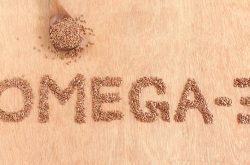The green and organic movement has become so big that sometimes we may be tempted to buy organic because it’s the “thing to do” instead of really understanding if and why organic is better and how to get the most out of the money we spend. Familiarizing yourself with the organic lingo, knowing which products fall into the “best to buy,” “should consider buying organic,” or “no need to buy organic” categories and keeping costs in check will help you become an organic guru in no time!
Just another label?
We all know that when you buy a Coach bag that a good amount of the price you pay goes toward buying into a brand. This may account for some of the cynicism that we hold toward organic foods. We may suspect that highly sought after items like Coach bags or in this case organic foods automatically cost more just because of the label. While there may be some truth to this assumption, it’s important to understand what the different labels really mean just like you would want to make sure that a Coach bag was made out of genuine leather in order to justify paying a higher price.
Below you will find organic terms and a legal definition of each. But first, it’s important to define what organic means. According to theUSDA, organic is a labeling term that indicates that the food or other agricultural product has been produced through approved methods that integrate cultural, biological, and mechanical practices that foster cycling of resources, promote ecological balance, and conserve biodiversity. Synthetic fertilizers, sewage sludge, irradiation, and genetic engineering may not be used.
· “100% Organic”: The product must contain 100 percent organic ingredients
· “Organic”:At least 95 percent of ingredients are organically produced
· “Made with Organic Ingredients”:At least 70 percent of ingredients are organic. The remaining 30 percent must come from the USDA’s approved list
· “Free-range/Free-roaming”:This can be a little misleading when referring to chicken, eggs and other meat products. The guidelines that determine whether a product can be classified as this are vague, leaving a lot of room for interpretation. For example, one of the guidelines says that outdoor access must be made available for “an undetermined period each day.” Some may take advantage of the vagueness and only let their animals outdoors for the bare minimum.
· “Natural/All Natural”: This is another vague term, and don’t confuse this with meaning organic. There is no generic definition for this label except when referring to meat and poultry products. (The USDA defines “natural” as not containing any artificial flavoring, colors, chemical preservatives or synthetic ingredients). But the ultimate decision whether to use these ingredients is left up to the manufacturer.



Comments (0)